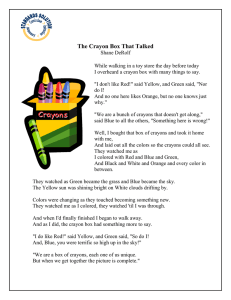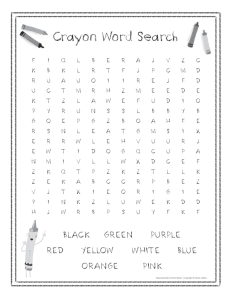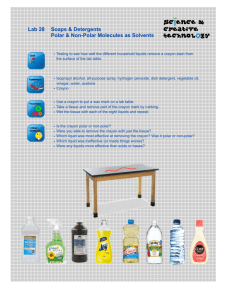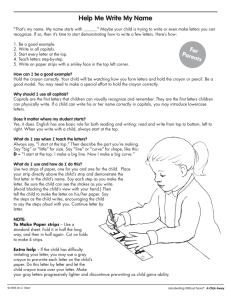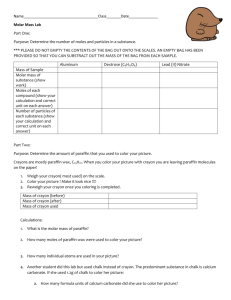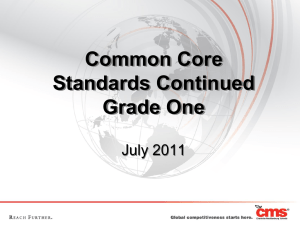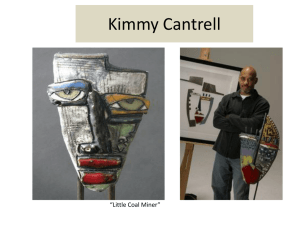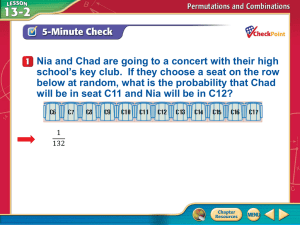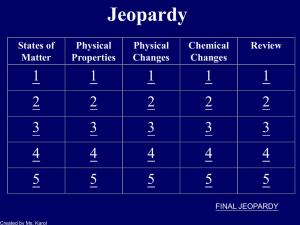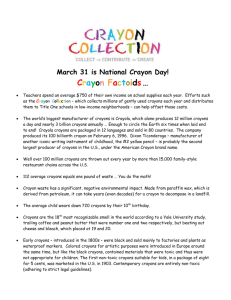Close Reading of Complex Texts
advertisement
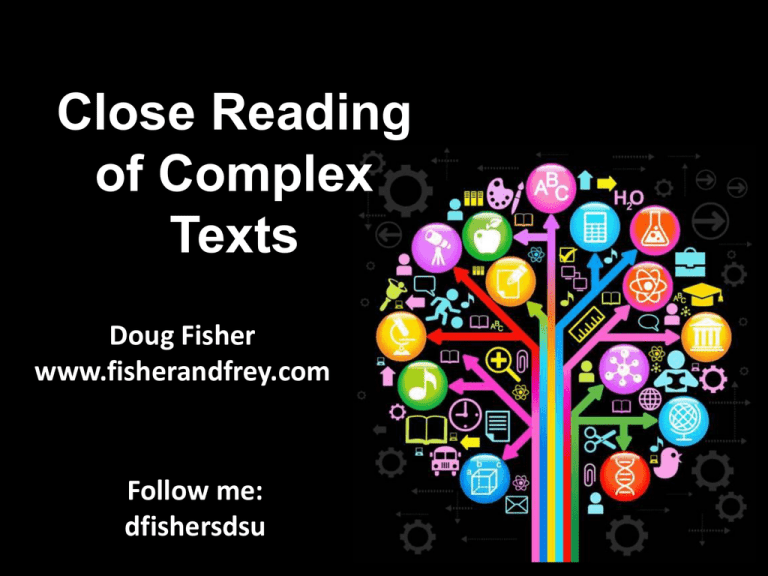
Close Reading of Complex Texts Doug Fisher www.fisherandfrey.com Follow me: dfishersdsu “Standard 10 defines a grade-by-grade ‘staircase’ of increasing text complexity that rises from beginning reading to the college and career readiness level.” (CCSS, 2010, p. 80) Text Quantitative Reader Qualitative Cognitive capabilities Motivation Knowledge Experience Task Teacher-led Peer-led Independent Comparison of Former and CCR-Aligned Lexile Ranges Former Lexile Range Grade Band K-1 2-3 4-5 6-8 9-10 11-CCR CCR Aligned Lexile Range N/A 450 725 420 820 645 845 740 1010 860 1010 925 1185 960 1115 1050 1335 1010 1220 1185 1385 The Power of Perception Text Quantitative Reader Qualitative Cognitive capabilities Motivation Knowledge Experience Task Teacher-led Peer-led Independent • Density and Complexity • Figurative Language • Purpose • Standard English • Variations • Register • Genre • Organization • Narration • Text Features • Graphics Levels of Meaning Structure Language Convention and Clarity Knowledge Demands • Background • Prior • Cultural • Vocabulary “Anyway, the fascinating thing was that I read in National Geographic that there are more people alive now than have died in all of human history. In other words, if everyone wanted to play Hamlet once, they couldn’t, because there aren’t enough skulls!” —Foer, Extremely Loud and Incredibly Close (2005), p. 3 Text Complexity Text Difficulty To build strength Less Complex To build stamina More Complex Simply assigning hard books will not ensure that students learn at high levels! Use a short passage Re-reading “Read with a pencil” Text-dependent questions Give students the chance to struggle a bit Creating a Close Reading Different Readings Have Different Foci Initial reads of the text What does the text say? After at least one reading How does the text work? Later readings of the text or related texts What does the text mean? Our goal with complex text is to slow the reader down. 1877 What does the text say? General Understanding What does the text say? General Understanding What does the text say? Key Details Select some one in your group to read the speech aloud. Add pauses, inflections, intonations, and emphasis (prosody) to the text. How does the text work? Vocabulary How does the text work? Vocabulary What is the tone of this speech? What words and phrases support your claim? How does the text work? Structure How does the text structure convey Chief Joseph’s mood? How does the text work? Structure What is it about the use of the word forever in the last line, “I will fight no more forever” that makes this statement so memorable? What does the text mean? Inferences Hollywood Portrayal of the Event What does the text mean? Intertextual connections “My son, my body is returning to my mother earth, and my spirit is going very soon to see the Great Spirit Chief. When I am gone, think of your country. You are the chief of these people. They look to you to guide them. Always remember that your father never sold his country. You must stop your ears whenever you are asked to sign a treaty selling your home. A few years more and white men will be all around you. They have their eyes on this land. My son, never forget my dying words. This country holds your father's body. Never sell the bones of your father and your mother.” Joseph commented "I clasped my father's hand and promised to do as he asked. A man who would not defend his father's grave is worse than a wild beast." What does the text mean? Intertextual connections Writing From Sources Constructed using Task Template 12: www.literacydesigncollaborative.org The Day the Crayons Quit What did Duncan find when he took his crayons out of the box one day? Which crayons feel tired and overworked? What are Yellow and Orange arguing about? Use Key Details to Locate Evidence Use Key Details to Locate Evidence • • • • • How does Gray Crayon feel? Why does Beige Crayon feel underused? How does Blue Crayon feel? To whom was Beige Crayon's letter written? Why does Red Crayon write the letter to Duncan? • According to Black Crayon, what is his main job? Which crayons appear sad? Embarrassed? How can you tell? How does Duncan respond to the letters? TDQs for Older Readers Which crayons write letters that mostly use pathos (i.e., appeal to emotions) to convince Duncan to help them? How is Beige Crayon’s argument different stylistically from Pink and Black crayon? How does the structure of the letter allow the reader to gain an understanding of the Gray crayon’s point of view? Close reading is only a PART of high quality instruction Comprehension and Collaboration 1. Prepare for and participate in collaborations with diverse partners, building on each others’ ideas and expressing their own clearly and persuasively. K-2 Features • • • • Following the rules of discussion Moving from participation to turn taking Sustaining discussion through questioning Adult support 3-5 Features • • • • Preparation for discussion Yielding and gaining the floor Posing and responding to questions From explaining own ideas to explaining the ideas of others 6-8 Features • • • • Using evidence to probe and reflect Collegial discussions include goals and deadlines Questions connect ideas from several speakers Acknowledge new information 9-10 Features • • • • Use prepared research in discussion Voting, consensus, and decision making Ensure hearing full range of opinions or options Summarize and synthesize points of disagreement 11-12 Features • • • • Civil, democratic discussions Questions probe reasoning and evidence Resolving contradictions Determine what additional info is needed Students still need to read texts independently Thank you!

